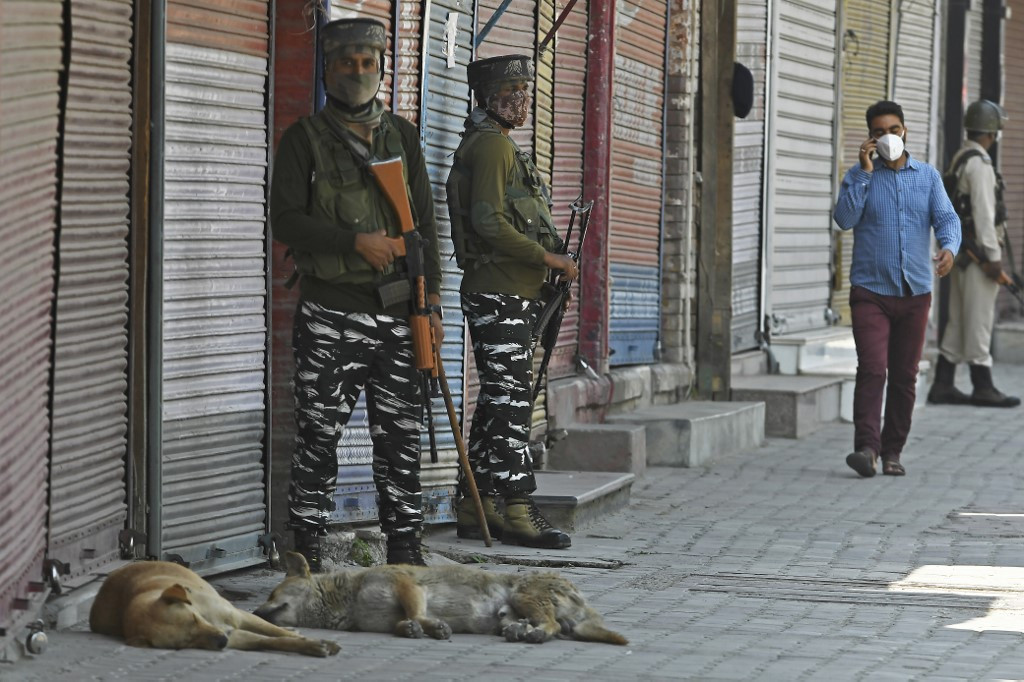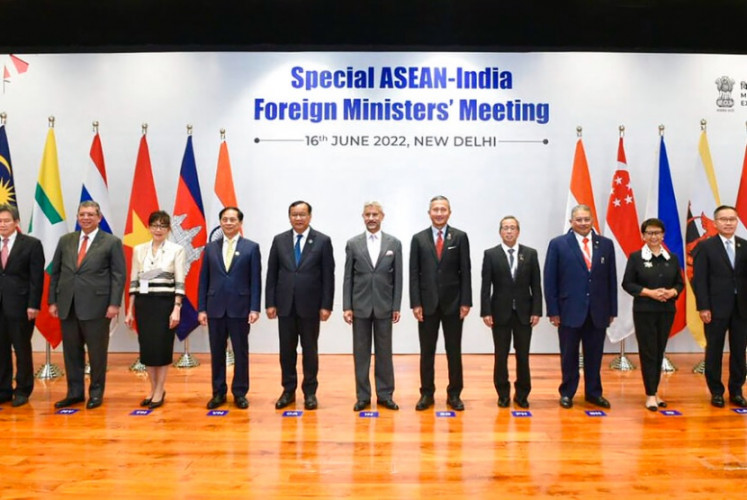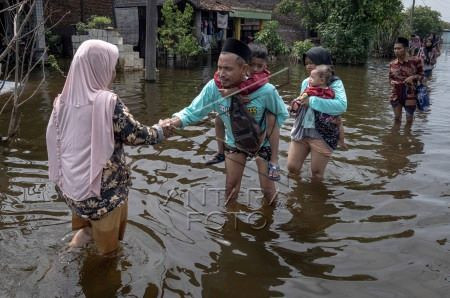India a learning ground for vaccination against COVID-19
India is well positioned to supplement the efforts of other countries in its fight against COVID-19.
Change Size
 Indian paramilitary troopers stand guard in front of closed shops in a street during a lockdown imposed by authorities after a sudden surge of COVID-19 coronavirus cases, in Srinagar on July 14, 2020. - India has almost 880,000 virus cases and more than 23,000 dead, and experts say the peak is still weeks away. (AFP/TAUSEEF MUSTAFA)
Indian paramilitary troopers stand guard in front of closed shops in a street during a lockdown imposed by authorities after a sudden surge of COVID-19 coronavirus cases, in Srinagar on July 14, 2020. - India has almost 880,000 virus cases and more than 23,000 dead, and experts say the peak is still weeks away. (AFP/TAUSEEF MUSTAFA)
I
n a momentous and historic decision, India rolled out the world’s biggest inoculation drive against COVID-19 on Jan. 16 under the “Make in India” initiative. A sense of joy and elation spread across the entire vaccination camp as the first 100 people received the vaccination dose, only under a year since the first infection case was reported in India.
Driven by Prime Minister’s vision and initiative of self-reliance (Aatma Nirbar Bharat) and leveraging its proven experience of the universal immunization program, Indian drugs regulators recently approved Oxford COVID-19 vaccine Covishield, manufactured by the Serum Institute of India and indigenously developed Covaxin of Bharat Biotech for restricted emergency use in the country, paving the way for this massive inoculation drive. These two indigenous vaccines are being used at over 3,800 sites across India under Phase I of this program to vaccinate 300 million Indians by August 2021.
To ensure equitable distribution of the vaccine, Indian policymakers have put in place key resources to meet logistical challenges. This is not entirely surprising as only a country like India, which organizes the world’s biggest elections, covering 1.3 billion people over a huge diverse land expanse, is well positioned to put in place large scale logistical arrangements at short notice for such a gigantic exercise.
India has undertaken pain staking ground work before the massive vaccine deployment. At least 18 ministries of government of India are involved in the planning and implementation of the roll-out along with WHO, UNICEF, UNDP, Bill and Melinda Gates Foundation and John Snow Foundation in India.
India's 10 million health care workers (doctors, nurses, technicians, ambulance drivers) are the first beneficiaries, followed by 20 million frontline workers like police, sanitation staff and other frontline workers. Next in line are people over 50 and people under 50 with comorbidities – diabetes, heart disease, and other conditions that put them at increased risk for a severe case of COVID-19 – altogether who number around 270 million.
The priority group of above 50 years may be further subdivided into those above 60 years of age and those between 50 to 60 years of age for purposes of phasing of rollout based on the pandemic situation and vaccine availability. After that, vaccines will become available to the broader population on a voluntary basis.
At the moment, India is vaccinating 200 people per booth per day, meaning about a million per day. Each vaccinated person is being monitored for 30 minutes after administering the shots for any adverse reaction. Each booth has adequate logistics and space available for waiting room monitored by two vaccinator officers.
The vaccination team consists of five members per booth. The health care and front line workers are administered the vaccine directly at the hospitals. After they receive the vaccine, the next high-risk group – people over 50 – can register online with their phone number and some form of ID, then receive a text message telling them when and where they will get vaccinated.
On the day of vaccination, they need to bring their ID for proof of identity. They can verify their identity with a range of proof, including driver’s licenses, passports, pension documents, and Aadhaar cards, India's 12-digit national identification system that pulls an individual's biometric data like fingerprints, irises, and photographs.
Once an individual is vaccinated, he or she will receive a QR code certificate to indicate so. State governments will be in charge of vaccinations within their state, but the central government will bear the cost of the vaccinations. According to the guidelines issued to states recently, the COVID Vaccine Intelligence Network (Co-WIN) system – a digitalized platform – will be used to track enlisted beneficiaries for the vaccination and anti-coronavirus vaccines on a real-time basis.
Immunizing a country that is almost 2,000 miles north to south and the same east to west with over a billion people will bound to be an Himalayan task. And then there are the many summer months where temperatures soar to 40 degrees Celsius (104 F) or more in many parts of India.
Prior to the launch, India created additional 29,000 cold chain points, 240 walk-in coolers, 70 walk-in freezers, 45000 ice-lined refrigerators, 41000 deep freezers and 300 solar refrigerators for COVID-19 vaccine storage. As the vaccine roll out progresses, there are plans to further augment it to meet transportation requirements.
Being one of the worst affected countries by the pandemic, one would have imagined India’s difficulties would have been compounded further by the subsequent lockdowns imposed by the government, leading to disruption of its vaccine production and the subsequent vaccination drive. But Indian scientists and researchers stepped up their efforts in this hour of national crisis and within a short span of 6 to 8 months, they have come up with two scientifically tested home grown COVID-19 vaccines.
From producing personal protective equipment in February last year to manufacturing two “Made in India” vaccines in January 2021 and vaccinating 300 million people in one shot, India has certainly come a long way. More so, when one considers that the number being vaccinated in India now is more than the entire population of the United States, Indonesia and several other countries.
As India vaccinates its billion plus people, countries like Indonesia with huge diverse population, may possibly draw some parallels with the Indian experience in dealing with its own set of challenges such as rising infection rates, compliance issues, digitization of health infrastructure, capacity building of health workers etc.
With a proven record of successful vaccination programs and time tested history of mass production of good quality and affordable medical products, India is well positioned to supplement the efforts of other countries in its fight against COVID-19.
For sheer scale of this operation and also in terms of logistics, capacity building and training that preceded it, this initiative has to rank as a historic and unprecedented one, not just for India and but for the entire world. While the world watches the roll out keenly, a Fitch Solutions Report said India may well pull off the “world’s largest vaccination program” successfully, given its “good track record” of mass vaccination drives.
***
The writer is consul general of India to Sumatra, resident in Medan.








